Click on the sites below and explore Menominee County!
Explore Menominee County
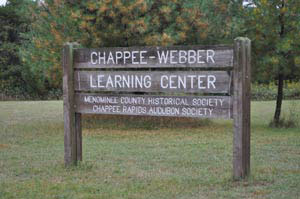
Chappee Rapids (Chappee-Webber Learning Center)
Chappee Rapids is the final home of Stanislaus Chaput, a French-Canadian fur trader from Quebec. Chaput, also called Louis Chappee, became the first settler at the mouth of the Menominee River in the early 1800s and is generally recognized as the first European to settle permanently in the Menominee River Basin. He operated a fur trading post just north of the Hattie Street Bridge in Menominee, but was removed from that post in 1824. He then moved to the location of Chappee Rapids, where he built a new trading post. This post was a center of trade for the surrounding villages of Menominee Indians until his death in 1856. This site is not only the final home of Stanislaus Chaput, it is also the home of the Chappee-Webber Learning Center. The Learning Center is dedicated to bringing area history to grade school students, and has many youth oriented programs during the summer months.
Additional Information
- To get to Chappee Rapids from Menominee, go north on 10th Street (US 41) to 48th Avenue, turn left onto 48th Avenue. Continue 4.4 miles to the Chappee Rapids Historical Marker (the road is now River Road). From there go 0.2 miles farther to the Chappee-Webber Learning Center sign on the left hand side of the road.
- Chappee Rapids is open from Memorial Day to Labor Day.
Learn More
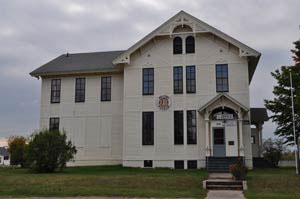
IXL Historical Museum
The Wisconsin Land and Lumber Company Office Building was the administrative center for the Company's extensive timber empire and its logging, sawmilling, and wood-products manufacturing in the late nineteenth and early twentieth centuries. The Museum depicts the history of the Land and Lumber Company, which was founded by Charles J. L. Meyer and was the largest producer of hard wood flooring in the United States. The Company also developed a new tongue and groove flooring process which helped them to become such a successful company. The building is the best preserved example of an office and headquarters of its type in all of Michigan. The building, which is currently in use as the IXL Historical Museum, was the headquarters of the Company from 1882 until 1978.
Additional Information
- The IXL Historical Museum is located at N5551 River Street in Hermansville, Menominee County.
- The Museum is open 12:30 pm through 4:00 pm Central Standard Time from Labor Day through Memorial Day.
Learn More
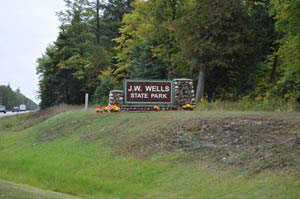
J. W. Wells State Park
J. W. Wells State Park was established in 1925. It was donated to the state of Michigan by the children of John Walter Wells, who was a lumberman and prominent man in the City of Menominee, serving as Mayor for three terms. Wells Park was home to a Civilian Conservation Corps camp from 1933 to 1942, during this time, many of the buildings in the park were constructed. Well State Park has retained the largest representative example of buildings built by the CCC during the Depression era in Michigan.
Additional Information
- Wells State Park is located at N7670 Highway M-35 Cedar River, Michigan.
- Wells Park is open year round for outdoor recreation.
Learn More
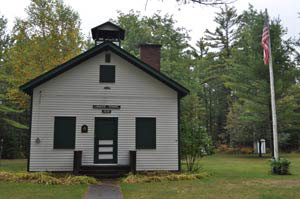
Longrie School
The small community of Longrie began in the early 1890s, when Wisconsin-Michigan railroad first began to breach the densely wooded forests of Michigan's Upper Peninsula. The name Longrie came from a married couple, John and Eva Longrie, who owned quite a bit of land in the area. The community had a few farms, a blacksmith, and a general store/flag station/cedar yard. As the community grew, it was decided that the children in the area needed an education. In 1911, Eva Longrie deeded an acre of land on which a school was to be built. The original building was in use until 1929, when it burned down. A new building was built a few months after the fire, and this building still stands today. The original and the new school buildings were both one room schools, with students ranging in age from six through eighteen. The new building is unique because it was constructed with windows only on one side, because of beliefs about special lighting for better learning.
Additional Information
- Longrie School is located at W7886 Co. Rd. 352, G12, Stephenson, Michigan.
- Longrie School is best visited during the summer months. It is not open every day or during any regular hours.
Learn More

Menominee County Courthouse
The Menominee County Courthouse was completed in 1875 by local contractors, Cummings and Hagan, from plans by an architect from Chicago, G. P. Randall. The Courthouse originally included a jail on the first floor, offices on the second, and the courtroom on the third. It was later altered with additions to the side and rear of the building in 1902 and 1930 resulting in the jail no longer being included within the building. The Courthouse still retains much of its original character and has served as the county courthouse for over a century.
Additional Information
- The Courthouse is located at 839 10th Avenue, Menominee, Michigan.
- Menominee County Courthouse is open year round.
Learn More
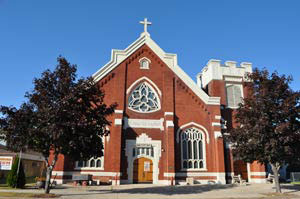
Menominee Heritage Museum (St. John Baptist Catholic Church)
The Menominee Heritage Museum is located in the old St. John Baptist Catholic Church. The Catholic Church was designed by a Menominee architect, Derrick Hubert, and built in 1921-22. It functioned as Menominee's oldest Catholic parish from its construction until it was closed in 1972. The church retains its magnificent stained glass windows, which were reportedly made in Munich, Germany. Along with the wonderful stained glass, the Menominee Heritage Museum contains a collection of materials which tell the history of the Menominee area. The Museum grounds also sports the Anuta Research Center, which contains much of the documented past of Menominee County.
Additional Information
- The Menominee Heritage Museum is located at 904 11th Avenue, Menominee, off of 10th Street (US 41).
- The Heritage Museum is open from Memorial Day to Labor Day.
Learn More
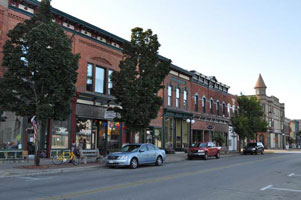
Menominee Main Street Historic District
The Menominee Main Street Historic District is made of more than forty commercial, civic and private buildings, most built around the 1890s. The 1890s was a prosperous time for Menominee because many lumber and shipping businesses began at that time, bringing wealth into the area. The District was created by local lumber barons, who employed many local architects and used regional materials for many of the buildings. It is a significant and well maintained representative of a late nineteenth century commercial district.
Additional Information
- The District is located on First Street in Menominee, along the waterfront and includes many commercial businesses, Spies Public Library, the Menominee Marina, the Menominee Water Plant, the First National Bank Building, the Great Lakes Memorial Marina Park, the Band Shell and many more significant buildings.
- The Downtown Historic District is open all year round, but the best time to take a stroll is during the spring, summer, and fall months.
Learn More

Menominee North Pierhead Light Station
The Menominee North Pierhead Light Station started operation in 1877 as a two-story cast-iron tower. The light signal was red and visible for twelve miles. One keeper was assigned to the station, but he was left to find his own place to live. It was relocated twice in the 1880s, first 305 feet away from shore in 1881, and then again in 1886, this time another 345 feet from shore. In 1891 the fifth order lens was changed to a larger fourth order lens, which was visible for 12.75 miles. In 1897 a fog signal was also installed. Since this time, many other changes have occurred to the North Pierhead Light Station, from the addition of another light to becoming automated in 1972.
Additional Information
- The Light Station is located left off of First Street onto Harbor Drive in Menominee before crossing the bridge over the Menominee river into Marinette, Wisconsin.
- The Light Station is easiest reached during the late spring through the fall months, it is best not to walk out on the break wall during the winter.
Learn More
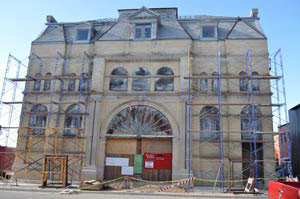
Menominee Opera House
The Menominee Opera House was built in 1902 by a group of lumber barons from the city of Menominee who wanted to enhance the cultural perspectives of the community. It was designed by a Chicago based architect, George O. Garnsey. It originally contained a full-rigged stage house, four dressing rooms, trap/green room, a lobby, and 1,000 seats in eight boxes, orchestra, mezzanine, and a gallery. It was thought to be the finest theater north of Milwaukee, Wisconsin. In its heyday, it sported such acts as Maude Adams and John Philip Sousa, along with many other local meetings and productions. As motion pictures gained popularity in the early 1900s, the popularity of the Opera House lessened and when a movie theatre opened in 1929, the Opera House ceased its original purpose. From 1929 to 1947 it functioned as a community auditorium, being owned by the city. It was again under private ownership in 1950, when a fire broke out inside in the wintertime and the resulting interior damage was too much for the owners to bear. It was reverted into a storage building, and later sold to the Vennema family in 1979. The Vennema family agreed to donate the building to a newly formed restoration group in 2004, and the building is currently, yet slowly, being restored to its original purpose.
Additional Information
- The Opera House is located at 122 5th Ave, Menominee, Michigan.
- The Opera House can be viewed all year round.
Learn More
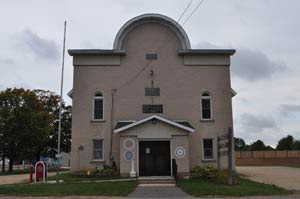
Pioneer Grange No. 1308 Hall
The Pioneer Grange No. 1308 Hall was built in 1911. This hall is one of the most important grange buildings built in northern Michigan. It is significant as an early economic and social focus for the town of Stephenson and Menominee County, as well as a representation of the national Grange movement and its influence in northern Michigan. The Grange is a farmer's organization which was started shortly after the Civil War and continues through this day, though it is now much smaller than it had been when the building was built in the early 1900s. This building is no longer in use by the Grange movement, but is now used by American Legion of Stephenson.
Additional Information
- The Pioneer Grange building is located at W5554 River Rd. #21, Stephenson, Michigan.
- The Grange building can be visited all year round.
Learn More
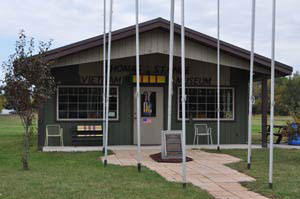
Thomas St. Onge Vietnam Veterans Museum
The Vietnam Veterans Museum was created by a small group of Veterans from the Vietnam War who came from Hermansville, Michigan. They created this museum to honor their friend who died in Vietnam, as well as others who died there, to teach future generations about the Vietnam War, and to provide a place for those who fought in Vietnam to be able to begin healing if they so choose. This museum became a large community effort, and was opened in 2002 after many generous donations of materials, personal time, and artifacts.
Additional Information
- The Vietnam Veterans Museum is located at N16462 Linden St., Hermansville, Michigan.
- The Veterans Museum is open Memorial Day through Veterans Day on Saturdays and Sundays from 1:00 to 4:00 pm Central Standard Time.
Learn More
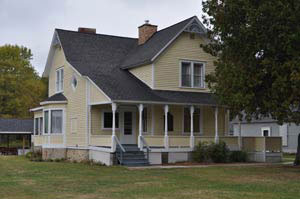
West Shore Fishing Museum (Bailey Fishery)
The West Shore Fishing Museum used to be the residence of Mathias Bailey, a commercial fisherman who moved to the Menominee County area with his family in 1870 from Wisconsin in search of more abundant fishing. In 1893, his son, Charles bought 123 acres of land and built the house, now used for the museum, for his wife, Aurora. Charles operated one of the area's largest fisheries on this site from 1893 through 1950.The Bailey house and outbuildings give a good example of lives lived by many fishing families in the Great Lakes area. The exhibits at the museum include: the restored Victorian home of the Baileys', the Carriage Shed, the Twine Shed, the Boat Shelters, and some restored fishing boats used on the Great Lakes.
Additional Information
- The West Shore Fishing Museum is located 15 miles north of Menominee, Michigan off of highway M-35 on the right hand side of the road.
- The Fishing Museum is open from Memorial Day through Labor Day on Saturdays and Sundays from 1:00 through 4:00 pm Central Standard Time.
